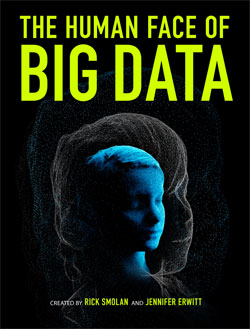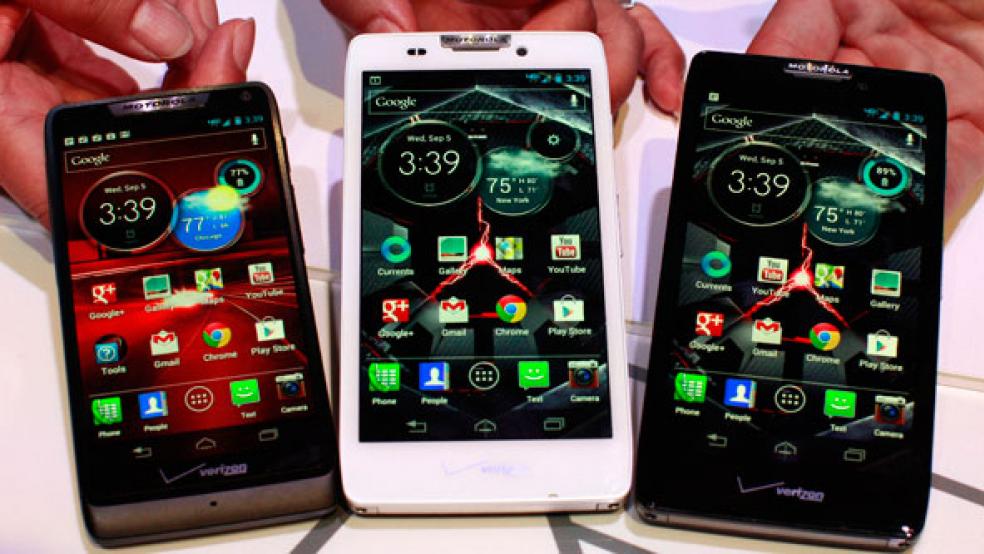Your next phone could know you’re sick even before you do. How? By monitoring infectious disease through data tracking.
“Certain patterns picked up by a person’s smartphone – such as a decrease in calls and text messages – could correspond to the onset of the common cold and influenza. Software can intervene when data analysis suggests the early stages of an illness.”
So says Kate Greene, a science and technology writer, in The Human Face of Big Data, who also points out that smartphones can collect data like location, speech patterns and motion without any active input from the user – which is where things get really interesting. “This sort of passive sensing of a person’s daily life [provides] powerful tools for personal medical and psychological diagnostics,” says Greene.
RELATED: How You're Shaping the Future Through Big Data
These innovations are particularly apt when the percentage of people over age 60 in this country is growing faster than any other age group – and when the trajectory in Medicare spending, which currently consumes 15 percent of the federal budget, is being fueled by demographics.
Combined with the use of massive amounts of data, these innovations are already enabling us as a society to provide healthier lives for our children and to provide seniors with independence while keeping them safe,” Rick Smolan, co-creator of the Big Data project, told The Fiscal Times.
Here are three concrete and compelling ways that data, technology and health care are intersecting to help change the face of American life and health care – while also keeping a careful eye on the bottom line (some of this information courtesy of the book):
RIDING A ‘MAGIC CARPET’
Intel-GE Care Innovations Lab, a joint venture of two of the world’s largest corporations, has been working on new “aging-in-place” devices designed to enable seniors to live at home as long as possible – rather than be schlepped off to costly and not-so-homey nursing or senior care facilities.
The company has prototyped a technology called the Magic Carpet, literally a carpet embedded with sensors and accelerometers that can be installed in an elderly person’s home.
In the first week, the carpet observes and “learns” the older person’s typical routine. If Mom, for example, typically walks into the kitchen each morning at 7 a.m. for a cup of coffee, the carpet notes that. “It doesn’t articulate ‘good’ or ‘bad,’” Smolan explains. “It just records that this is how Mom walks on a normal day.”
After the first week, the system rigorously checks for sudden or even gradual abnormalities in the elderly person’s “baseline.” So if Mom is moving more slowly than usual, for example – or if it’s 11 a.m. by the time she first sets foot in the kitchen for her morning coffee – the system sends an alert to a family member or physician.
Devices like this one are particularly promising when doctors and nurses – or farflung family members, for that matter – are not always “on hand to encourage healthy behavior, but mobile phones and other wireless gadgets can be,” said The Economist about the sensor-stuffed carpet, an example of what Intel-GE calls “people-centered, technology-based solutions.”
DETECTING INFECTION WITH ANALYTICS
A whopping 20 percent of all premature babies contract serious infections during their hospital stays. But while modern intensive care units nearly overflow with data related to these preemies' hospitalizations, most of it is simply not used, says Caroline McGregor, a computer scientist at the University of Ontario Institute of Technology.
Why? The standard monitoring of a premature infant tracks the heartbeat, chest motion, breathing rate, heart rate, blood oxygen level, and blood pressure many times – sometimes hundreds of times – per second. Despite the millions of heartbeat measurements generated per day, nurses “write one number, on a paper chart, every hour,” to represent an infant’s heartbeat, McGregor explains.
But working with IBM on a computing platform to gather and analyze the data, McGregor and her team discovered a lifesaving pattern. The rhythm of a healthy person’s heartbeat is not perfectly regular – but when an infection begins, the heartbeat becomes more uniform.
By harnessing millions of heartbeat measurements from the ICU each day, McGregor found she could detect a baby’s infection at least a day before it became symptomatic – giving physicians a potential 24-hour jump on treating and beating the bacteria.

McGregor’s team, Project Artemis, is still confirming its findings, but the group hopes that ICUs worldwide will soon begin using the data as an early-warning system, enabling babies to begin receiving lifesaving treatments more quickly and efficiently.
There is much wider potential, too. As a data monitor and cloud-based tool, McGregor sees applications for remotely monitoring late-stage, at-risk pregnancies, as well as leukemia patients with compromised immune systems. “We could be looking for infections and catching them a lot sooner,” she told IT World Canada. And cutting costs.
FOLLOWING THE MONEY
Rather than accept that rising health care costs are an inevitable fact of American life, Dr. Jeffrey Brenner of Camden, New Jersey, a family physician, decided to see where all the money that went toward hospital visits was actually spent.
Using a memory drive containing the records of 600,000 hospital visits, Brenner built a map linking hospital claims to patients’ addresses. Analyzing the patterns of data, he was surprised by the results: Just 1 percent of patients, or about 1,000 people, accounted for 30 percent of hospital bills – because these patients were showing up in the hospital time after time. “It was a microcosm for what’s going on in the whole country,” Brenner says.
“Emergency-room visits and hospital admissions should be considered failures of the health care system until proven otherwise,” he told The New Yorker.
To help address costly dysfunction in the health care system, Brenner founded the Camden Coalition of Healthcare Providers. Using the power of data, the coalition can dispatch caseworkers to care for patients with the most problems. Once caseworkers actually began making proactive home visits and encouraging these high-risk patients to stay on their medications, the target group’s hospital bills fell dramatically.
Lillian Perez, a New Jersey resident, is an example of the program’s success. Over a 12-month period, she ran up $742,265 in hospital bills. She now receives regular home visits from the Camden Coalition’s intervention team – whose data tell a fascinating tale: Since those visits began, Perez hasn’t cost the city a single cent for another ER trip.
This is the fifth in a series of articles about the ability of Big Data to change lives, economies, governments and much more, as captured by Rick Smolan and Jennifer Erwitt in the book, The Human Face of Big Data. Read more about their project here.





